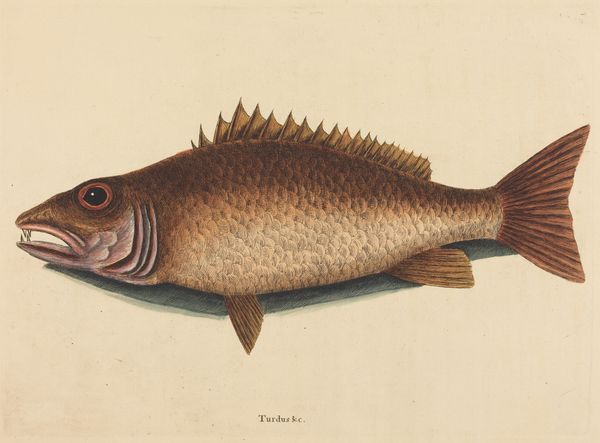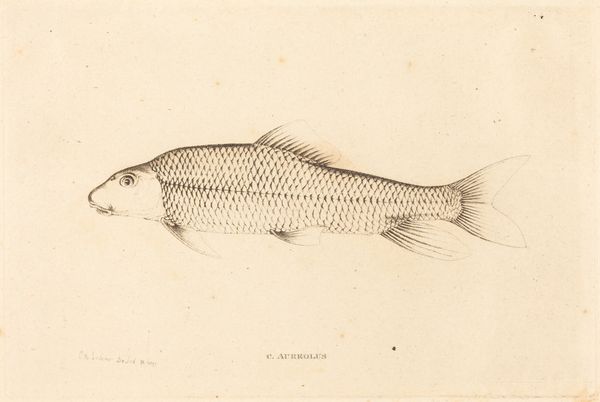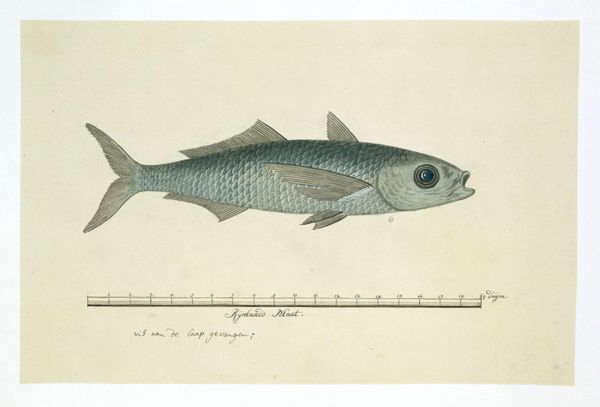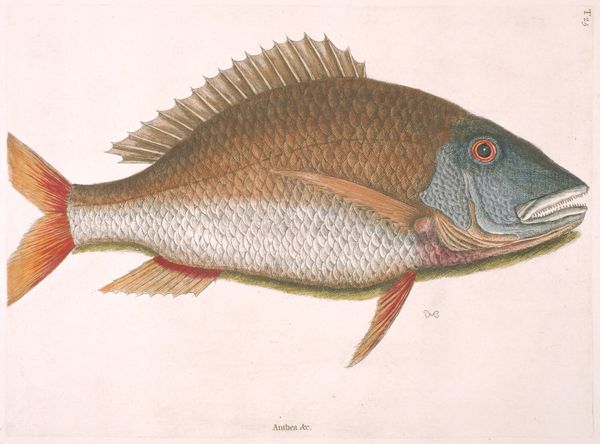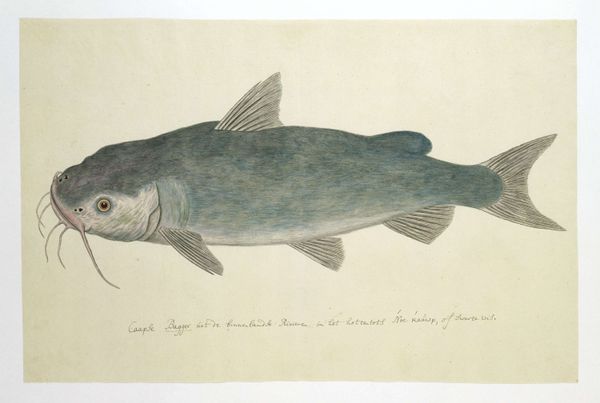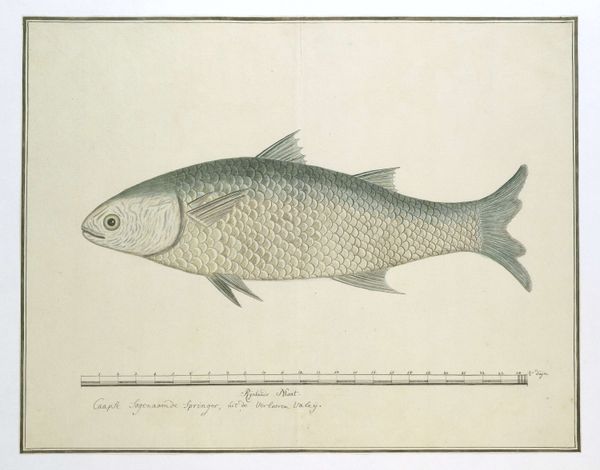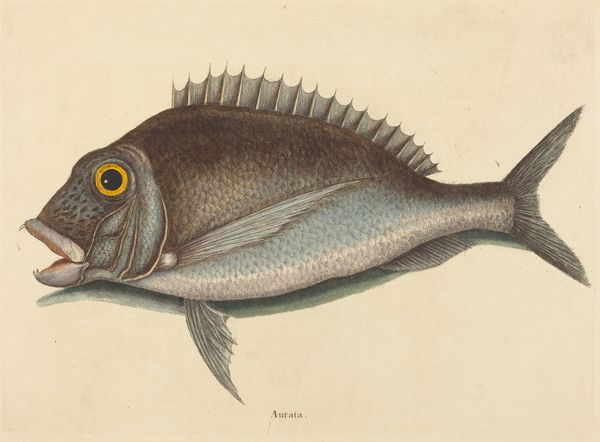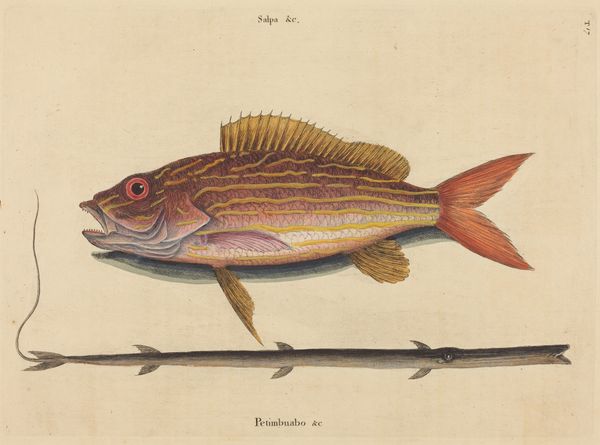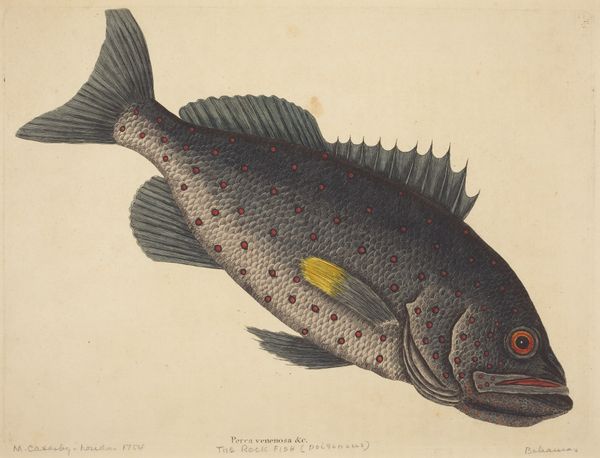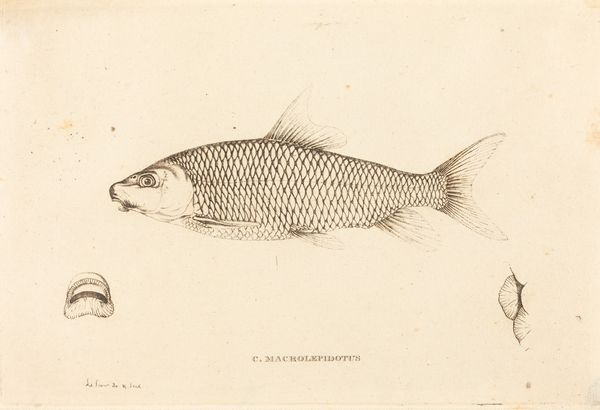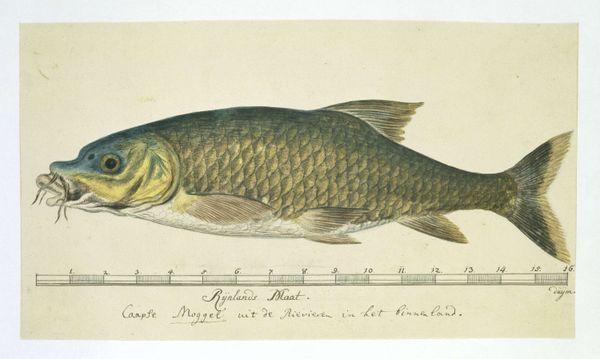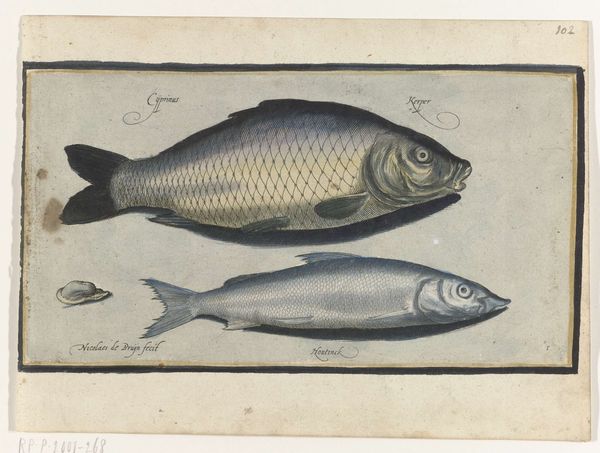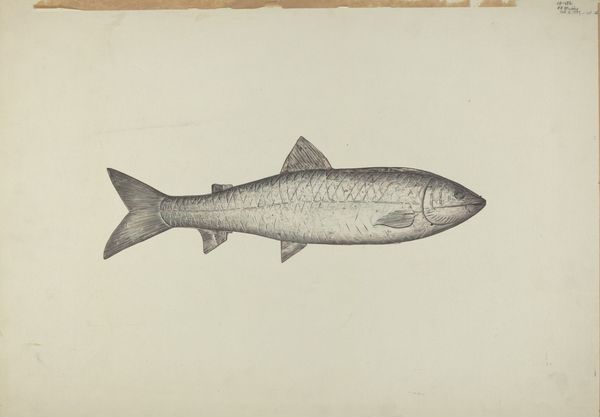
drawing, watercolor
#
drawing
#
watercolor
#
coloured pencil
#
watercolour illustration
#
naturalism
#
botanical art
Dimensions: height 660 mm, width 480 mm, height 223 mm, width 390 mm, height mm, width mm
Copyright: Rijks Museum: Open Domain
Curator: I find this watercolour drawing of "Cheilodactylus fasciatus (Redfingers)", possibly from between 1777 and 1786 by Robert Jacob Gordon, quite interesting. What strikes you about it? Editor: The detail is astonishing. It's like a photographic record, only made with watercolor and coloured pencil. How would you interpret this piece? Curator: The means of production are intriguing. This wasn't simply about capturing a likeness; it was about resource management. What pigments were available? How did trade routes influence artistic practices? What specific labour divisions facilitated the creation of such a detailed drawing of a redfinger? The materiality speaks volumes about the social and economic context. Editor: That's interesting; I hadn't thought about the supply chain involved! Curator: Think about it: where were the raw materials sourced, processed, and ultimately used? What skills did Gordon, or perhaps those assisting him, require to render the scales and fins with such precision? And, critically, who consumed such images, and for what purpose? Was it purely scientific documentation, or something more complex? Editor: So, it is less about the fish itself and more about the world that allowed its image to be created? Curator: Precisely. It is an interesting commentary about the society that produced it. The image prompts us to consider the processes that led to its creation. By acknowledging that any representation always is connected to production and consumption, the aesthetic experience becomes embedded into the material world, instead of simply focusing on appreciation and display value. Editor: This has given me a lot to consider. Looking at it through a materialist lens reveals a much richer story. Curator: Indeed. It's a shift from seeing art as an isolated object to understanding it as a product of a complex network.
Comments
No comments
Be the first to comment and join the conversation on the ultimate creative platform.
